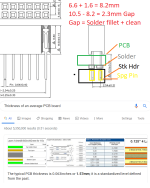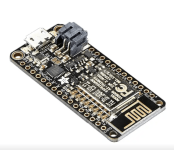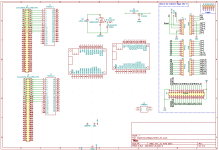methods
1 GW
It is well known that I have always done my development in Eagle. This is because it was free/cheap and this is the tool my mentor taught me on.
Many tried to get me to move over to KiCad, I held out over 5 years. I just completed a design transition.
* Porting projects from Eagle
* Porting GitHub Eagle Projects (like Arduino's and Shields)
* Combining multiple projects into one
* Building and muxing Schematics
* Building and muxing Board files
* Modifying and saving off Library parts
* Getting all the 3D modeling working
* Getting auto-route working . . .
* Everything but exporting the working files and getting examples cut.
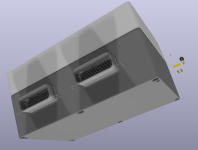
To test out the program I laid out the ultimate Arduino Shield
* IP67 Ingress Protected (Waterproof)
* Integrated Signal Conditioning - 100V 8A digital - 100VDC Analog - Isolated AC/DC Current
* Cloud connected via WiFi/2G/3G and via BLE via Android
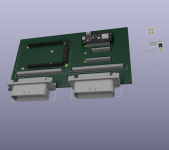
High level ... it is just a motherboard. You need someplace to land the panel mount connectors. On that motherboard, I land 2 types of Arduino
* MEGA - for build DIO and Analog in
* Feather - for low cost Radio
Of course... you can also land any Arduino Shield and any Feather Wing
I put all of the signal conditioning on a shield of my own.
* Line noise in/out
* Analog divide then single pole filter
* Digital out is active low via 4330's
The pics are of an older version, but the 64 pin headers shown cut off all Input and Output at a Signal Conditioning Stage. The original concept was here:

My final analysis is that KiCad is not ready for Professional Prime Time (it is not a challenge to something refined like Altium) but for the Enthusiast? Yea - it absolutely works - all of the functions. I fell off a cliff a few times and had to do some irritating work-arounds. . . but ... You can certainly succeed using the tool.
I now recommend folks start with KiCad and not Eagle.
The reason for this is that Eagle switched to a Subscription and tightened up the way you interact with PCB's. I was on their $100 plan. . . and in trying to import a file recently I was blocked. If I can not do my work then it is not a tool - so - Instead of supporting Eagle for $500/year I started using KiCad.
... Support sucks for KiCad
By comparison... Eagle has a rich support base (of folks like YOU)... but it will come around.
... anyhow
My SE/Iot shield is like any other Mega Shield.
It rests atop a Mega - i.e. Mega comes up from the bottom. You can then stack further Mega Sheilds on top.
Same with the Feathers (tho the long pins are not in yet)
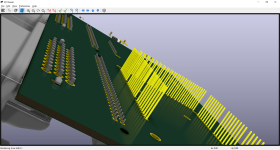
Here is the Stackup proof for the "long pins". Make them long enough to accept the solder fill.
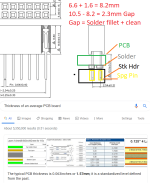
-methods
Many tried to get me to move over to KiCad, I held out over 5 years. I just completed a design transition.
* Porting projects from Eagle
* Porting GitHub Eagle Projects (like Arduino's and Shields)
* Combining multiple projects into one
* Building and muxing Schematics
* Building and muxing Board files
* Modifying and saving off Library parts
* Getting all the 3D modeling working
* Getting auto-route working . . .
* Everything but exporting the working files and getting examples cut.

To test out the program I laid out the ultimate Arduino Shield
* IP67 Ingress Protected (Waterproof)
* Integrated Signal Conditioning - 100V 8A digital - 100VDC Analog - Isolated AC/DC Current
* Cloud connected via WiFi/2G/3G and via BLE via Android

High level ... it is just a motherboard. You need someplace to land the panel mount connectors. On that motherboard, I land 2 types of Arduino
* MEGA - for build DIO and Analog in
* Feather - for low cost Radio
Of course... you can also land any Arduino Shield and any Feather Wing
I put all of the signal conditioning on a shield of my own.
* Line noise in/out
* Analog divide then single pole filter
* Digital out is active low via 4330's
The pics are of an older version, but the 64 pin headers shown cut off all Input and Output at a Signal Conditioning Stage. The original concept was here:

My final analysis is that KiCad is not ready for Professional Prime Time (it is not a challenge to something refined like Altium) but for the Enthusiast? Yea - it absolutely works - all of the functions. I fell off a cliff a few times and had to do some irritating work-arounds. . . but ... You can certainly succeed using the tool.
I now recommend folks start with KiCad and not Eagle.
The reason for this is that Eagle switched to a Subscription and tightened up the way you interact with PCB's. I was on their $100 plan. . . and in trying to import a file recently I was blocked. If I can not do my work then it is not a tool - so - Instead of supporting Eagle for $500/year I started using KiCad.
... Support sucks for KiCad
By comparison... Eagle has a rich support base (of folks like YOU)... but it will come around.
... anyhow
My SE/Iot shield is like any other Mega Shield.
It rests atop a Mega - i.e. Mega comes up from the bottom. You can then stack further Mega Sheilds on top.
Same with the Feathers (tho the long pins are not in yet)

Here is the Stackup proof for the "long pins". Make them long enough to accept the solder fill.

-methods


